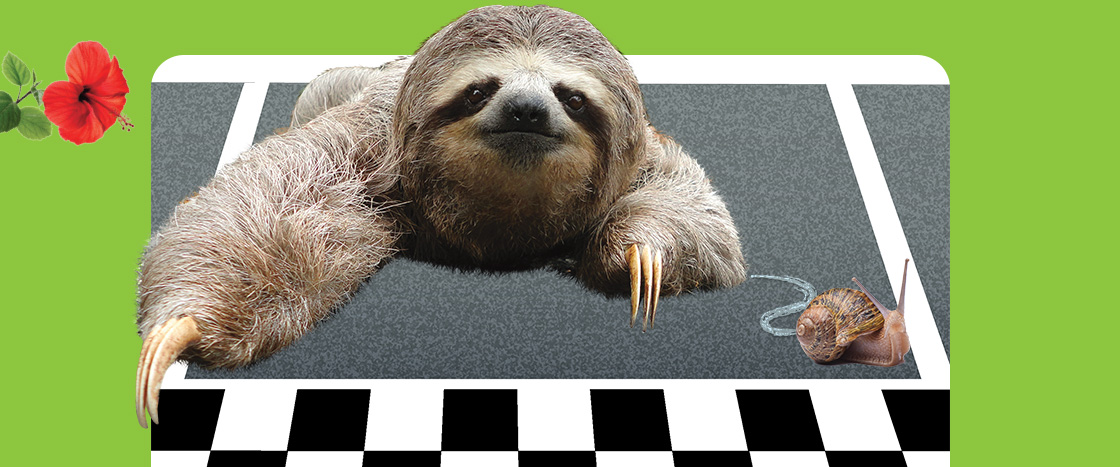Go, go, sloth.
Go, go, snail.

Read a silly story filled with decodable words and s-blends.
Go, go, sloth.
Go, go, snail.
The snail is slow.
It slips along.
The sloth is slow.
It stops to sleep.
The snail will not stop.
Will it win?
The sloth gets up.
You can still do it, sloth!
Oh no!
It stops to sniff.
It stops to snack.
Nom, nom, nom.
The snail is at the end.
It wins in a snap.
It is a star!
Oh well.
The sloth is back to sleep.
It is so snug.
More About the Article
Phonics and phonological awareness (s-blends), Fluency
S-blend words
sleeps, slips, sloth, slow, snack, snail, sniff, snug, star, still, stop
go, along, not, you, oh, no, so
slow, snail, sleep
Small Group
Pairs, Independent Reading
1. BEFORE READING
Preview letter sounds and high-frequency words (15 minutes)
Set a Purpose for Reading (3-5 minutes)
Reading Focus: Phonological Awareness (10 minutes)